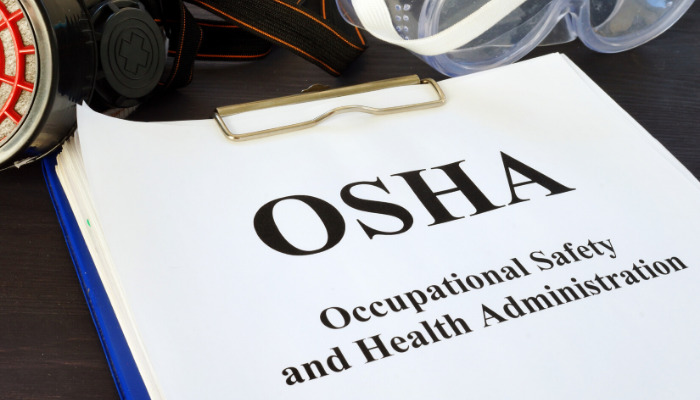
OSHA Compliance for Hazardous Waste
OSHA compliance is, and should be, a major focus for every industry, in every department, at all times.
The OSHA is the Occupational Safety and Health Administration, established in 1971. OSHA works with state partners, employers, safety and health professionals, unions, and advocates to improve workplace safety. According to the Department of Labor,
“Since the passage of the OSH Act, the rate of reported serious workplace injuries and illnesses has declined from 11 per 100 workers in 1972 to 3.6 per 100 workers in 2009. OSHA safety and health standards, including those for trenching, machine guarding, asbestos, benzene, lead, and blood borne pathogens have prevented countless work-related injuries, illnesses and deaths.”
Superfund Health and Safety Task Force
The Department of Labor recently published an article entitled “Correcting Common Health and Safety Program Deficiencies at Remediation Sites.” It describes the launching of an interagency team called the EPA/Labor Superfund Health and Safety Task Force. Over the course of 34 months, the task force reviewed the health and safety plans of 18 Superfund remediation contractors, and also conducted 10 comprehensive site audits. This review informed training and guidance material for compliance officials as well as hazardous waste contractors.
The task force audits illuminated patterns of deficiencies which reflected the citation pattern for hazardous waste sites in general. The most commonly observed deficiencies at hazardous waste sites involve these factors: The site’s written safety and health plan; work practices; engineering controls; personal protective equipment (PPE); emergency response programs; and site monitoring practices.
Their conclusion: “Wherever hazardous waste site operations are currently being conducted, many of the following deficiencies and recommended corrective actions are likely to be applicable.”
Common Deficiencies Impacting Health and Safety
Here are the six deficiencies the task force identified, along with their proposed solutions. Read the article for details.
Deficiency 1: Ineffective Management of Safety and Health Functions
Corrective Action: Plan for Effective Management of the Safety and Health Program
Deficiency 2: Out-of-Date or Incomplete Written Site Safety and Health Plan
Corrective Action: Make the Written Safety and Health Plan a Site-Specific, Working Document


Deficiency 3: Inadequate Monitoring of the Nature and Level of Hazardous Exposures on Site
Corrective Action: Implement an Effective Monitoring Program to Evaluate Site Hazards
Deficiency 4: Inappropriate Selection of PPE (Personal Protective Equipment)
Corrective Action: Use Site Monitoring Data and Other Hazard Information to Document the Basis for PPE Selection
Deficiency 5: Lack of a Program to Evaluate the Effectiveness of Safety and Health Procedures and to Correct Deficiencies
Corrective Action: Establish an Ongoing Program to Evaluate Site Safety and Health Procedures
Deficiency 6: Emergency Response Planning
Corrective Action: Develop Site-Specific Emergency Response Plans and Implement All Plan Requirement
OSHA’s Suggestions for Health and Safety
Any industrial workplace must be OSHA compliant, and can benefit from OSHA’s suggestions for optimizing the functioning of a site safety and health program, such as:
- Appointing well-qualified safety and health personnel who have the authority to make site safety and health decisions;
- Tailoring and updating the site safety and health plan to reflect on-site conditions and work practices throughout the life of a project;
- Quantifying worker exposure levels using appropriate sampling methods;
- Selecting PPE based on accurate, site-specific job hazard analyses;
- Evaluating safety and health procedures on an ongoing basis and documenting deficiencies and corrective actions; and
- Planning and practicing emergency response procedures thoroughly, so that on-site personnel and local responders know how to respond to emergencies.


/NQA-ISO-9001-Logo-ANAB.jpg)